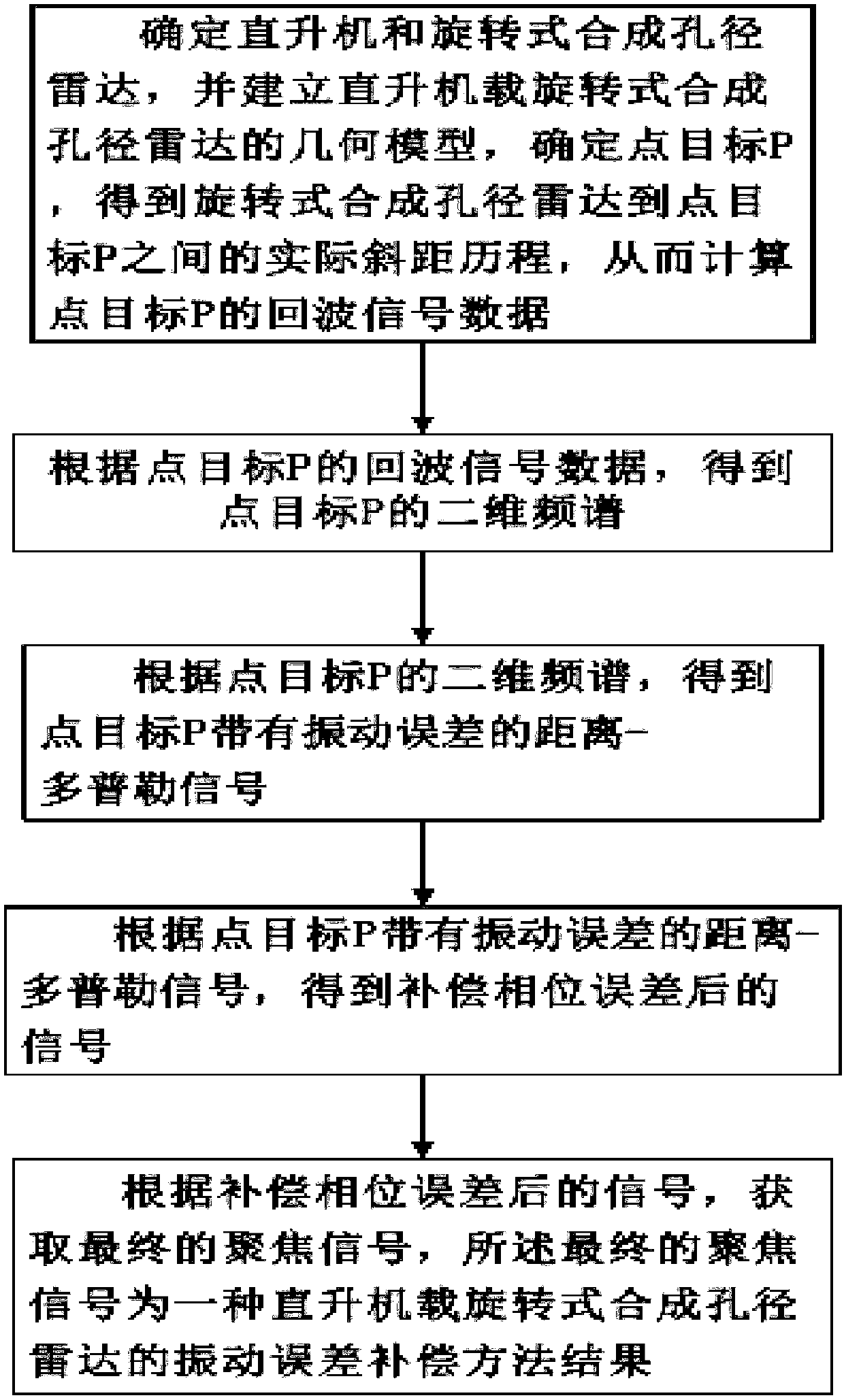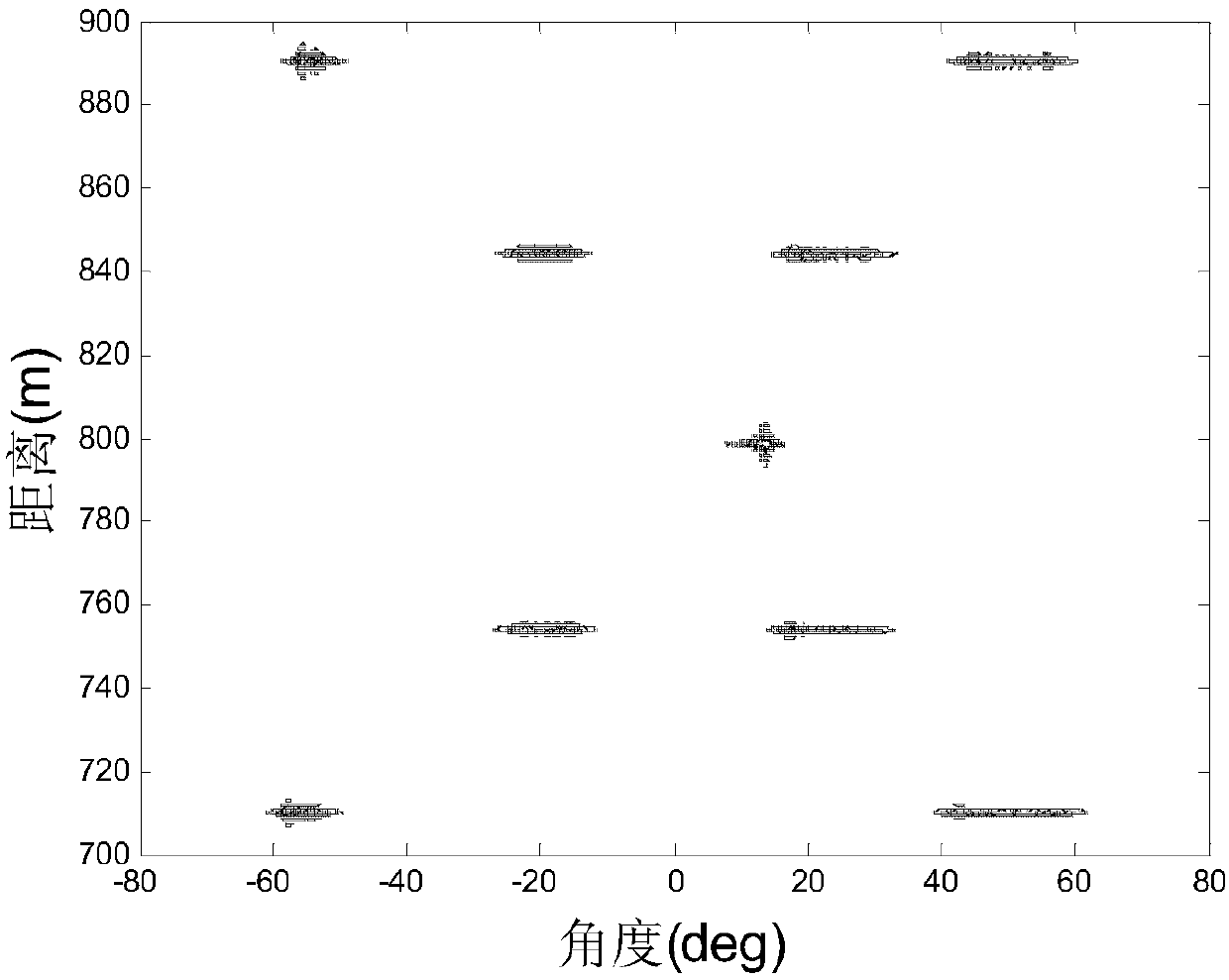Vibration error compensation method for helicopter-borne rotation type synthetic aperture radar
A synthetic aperture radar, vibration error technology, applied in the direction of reflection/re-radiation of radio waves, utilization of re-radiation, measurement devices, etc., can solve problems such as uneven load, aggravated vibration amplitude, and less consideration of slant range history vibration error.
- Summary
- Abstract
- Description
- Claims
- Application Information
AI Technical Summary
Problems solved by technology
Method used
Image
Examples
Embodiment Construction
[0026] refer to figure 1 , is a flow chart of a vibration error compensation method of a helicopter-borne rotary synthetic aperture radar according to the present invention; wherein the vibration error compensation method of a helicopter-borne rotary synthetic aperture radar includes the following steps:
[0027] Step 1, based on the geometric model of the rotating synthetic aperture radar ROSAR, obtain the actual slant range history R between the rotating synthetic aperture radar and the point target P r (t a ), so as to calculate the echo signal data s(t of the point target P r ,t a ).
[0028] Specifically, in the embodiment of the present invention, a BO105 helicopter is selected as the experimental platform; such as figure 2 The geometric model of the helicopter-borne rotary synthetic aperture radar ROSAR is established as shown in the figure, in which the rectangular coordinate system OXYZ is established with the BO105 helicopter platform as the center. The rotor p...
PUM
 Login to View More
Login to View More Abstract
Description
Claims
Application Information
 Login to View More
Login to View More - R&D
- Intellectual Property
- Life Sciences
- Materials
- Tech Scout
- Unparalleled Data Quality
- Higher Quality Content
- 60% Fewer Hallucinations
Browse by: Latest US Patents, China's latest patents, Technical Efficacy Thesaurus, Application Domain, Technology Topic, Popular Technical Reports.
© 2025 PatSnap. All rights reserved.Legal|Privacy policy|Modern Slavery Act Transparency Statement|Sitemap|About US| Contact US: help@patsnap.com



